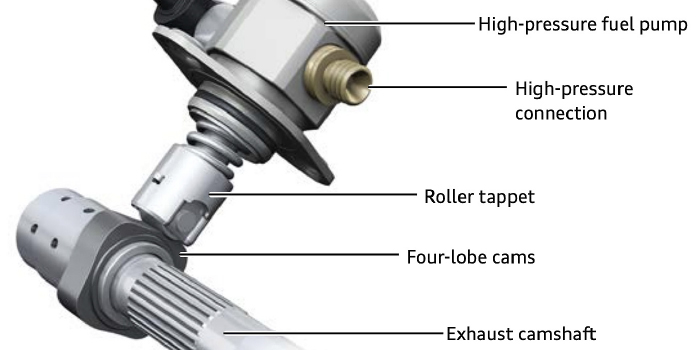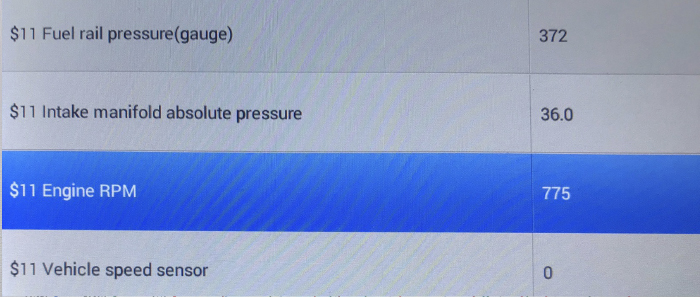The most common diagnostic procedures for fuel pumps in the past were analog and hands-on, and most fuel pump-related problems could be solved with a pressure gauge and voltmeter. Today, the scan tool is quickly becoming the most important tool when diagnosing a fuel supply problem.
On early vehicles, the fuel pump was energized when the key was turned on and a vacuum-operated diaphragm regulated fuel pressure at the engine. Today, input from at least two modules and various sensors are required for a fuel pump to operate. This simplifies diagnostics and can save you from unnecessarily dropping a fuel tank.
With a scan tool, it’s possible to verify if the modules controlling the fuel pump are receiving the correct data, such as the oil pressure, crank position and security information. Some late-model imports have even turned the fuel pump into its own module or node on a serial data bus. The module can share data like the fuel level and EVAP system status with the instrument cluster module and the ECM.
What this also means is that this data can be monitored with a scan tool. If the serial data bus is unable to communicate with certain modules like the theft deterrent system or even the Body Control Module (BCM), it could cause the fuel pump to shut down.
Most late-model vehicles have returnless fuel systems. Instead of using engine vacuum to a pressure regulator under the hood, the system uses engine data and varies the speed of the pump to meet fuel requirements. This means that if you connect your voltmeter to the fuel pump circuit, the readings will bounce around instead of being a constant voltage. Also, don’t look for a relay – these pumps use driver circuits that are part of the fuel pump module or the ECM.
Initial Diagnostics
The most common customer complaints when it comes to fuel pumps are no-start conditions, intermittent no-start conditions and hard starting. The first step in any diagnostic process is to perform a visual inspection of the vehicle.
Next, verify the customer’s complaint. Many diagnostic processes go wrong because the technician fails to verify the customer’s concern. If the customer says it does not run, first make sure it will not start and run.
Forget your “noid” lights on most modern vehicles. This low-cost tool worked well on simple vehicles, but with modern vehicles, it can lead you down a diagnostic black hole. If the vehicle has Gasoline Direct Injection (GDI), there is no way you could even access the injectors to install a noid light. If you do feel compelled to prove the injectors are pulsing, try using a scope and amp clamp.
After a visual inspection and verifying the customer’s complaint, it’s time to connect the scan tool. First, pull the codes and make sure the modules are communicating on their communication buses. With the codes pulled, you can come up with diagnostic strategies and further tests to resolve the no-start condition. Service information is just as critical of a tool as a pressure gauge.
Every fuel system has a set of parameters that must be set in order for the pump to be energized. For some systems, this may include a crank sensor signal and the oil pressure reading. Also, check the vehicle theft deterrent module.
If the vehicle has any “loss of communication” codes that start with a “U,” resolve those problems first before diagnosing or replacing the fuel pump. While these codes may seem like they have nothing to do with the fuel pump, often a dead module or short in the serial bus can result in a no-start condition.
GDI Strategies and Scan Tools
Diagnostics fundamentals for GDI are not that much different from conventional fuel injection systems. These systems inject the right amount of fuel directly into the cylinder. These systems are very efficient and are able to get the right amount of fuel into the cylinder by not having to spray on the back of the intake valve, so no fuel is wasted.
In fact, after working on a few GDI systems, you may find that they get easier to work on due to the tighter long-term and short-term fuel trim parameters.
The in-tank pump in GDI systems is more responsible for volume than pressure. Fuel on this side of the system is called the low-pressure side. A fuel pump on the engine pressurizes the fuel for high-pressure injectors. This pump is driven off a lobe on the camshaft. This part of the fuel system is called the high-pressure side.
Factory and enhanced scan tools can monitor pressure transducers on the high and low sides of the system. This information can be used to diagnose the health of the low-side and high-side pumps.
These tools will have the PID parameters for these components as part of the Mode 6 data. These parameters can tell you what the pressures should be during the different modes of operation. Also, if this data is used in conjunction with the waveforms of the injector pulses, it’s possible to perform cylinder balance and other diagnostic tests. The pressure transducers can also be used to monitor system pressures to diagnose hard-start problems.
So much of the diagnostic process for fuel pumps can be performed from the driver’s seat of the vehicle with a scan tool. This makes you a more productive technician and the diagnosis more accurate. It also translates into a more profitable department.


















